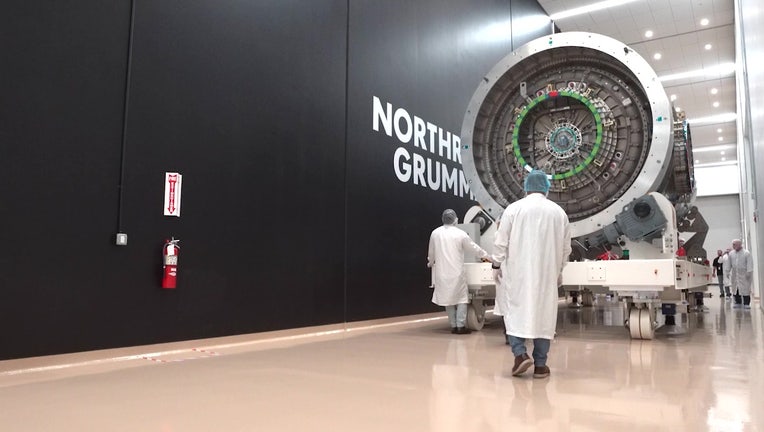NASA capsule being built in Gilbert to orbit the Moon and become a stepping stone to Mars

GILBERT, Ariz. - The next NASA mission to Mars makes a pit-stop in Arizona.
The first spacecraft to orbit the Moon, called a HALO, is being outfitted in Gilbert.
It’ll become the launchpad to get humans to Mars.
Why you should care:
The HALO capsule is being equipped inside and out before heading to Kennedy Space Center, then onto the Moon.
It's a 140 million-mile journey to Mars, starting in Gilbert.
What we know:
Northrop Grumman showed off NASA's HALO capsule, where humans will live as they orbit the Moon, and they brought in a real live astronaut for the occasion.
"We're going to outfit the interior, exterior and ship it out," said astronaut Randy Besnik. "It’s going to become the home for humanity for the next 15+ years."
The HALO will be the first of several spacecraft that make up the gateway, like the International Space Station, except it’ll orbit the Moon instead of earth.
Then, it will become a stepping stone to Mars.
What they're saying:
"The Moon and of course Mars has secrets to tell us about where we live. What happened to Mars? Did it look like the Earth? Did something happen? Learning scientific discoveries that we will learn, to me, is a responsibility for our generation," said Carlos Garcia-Galan, Gateway Deputy Program Manager.
All of this is a great experience for smart college students to see it up close and personal.
"I used to go to space camp and look forward to a thing like this. So now just seeing the future possibility of human space flight around the Moon and to Mars is super exciting," said Els Shepard, an Aerospace Engineering student.
"It’s amazing to see this stuff go down in Arizona," said Juan Machado Jr., a U of A Mechanical Engineering student. "When you think of big space programs and things that happen in space, it’s not usually in Arizona."
Dig deeper:
HALO is about the size of a one-bedroom apartment and a place to test the capabilities of humans and human technology in deep space.
It needs to protect astronauts from deadly radiation and extreme heat and cold and if something goes wrong, there's not a hardware store in sight.
"If something broke, how can we deliver it through a logistics mission? How can they actually go physically and grab it and pull it out? People don’t think about the fact that a lot of the time and design goes into how humans will work here for exactly that reason. There will be problems. There will be things that break," said Ryan Tintnet, VP of Northrop Grumman.
Watch FOX 10 Phoenix live:
What's next:
HALO is expected to launch in 2027.
President Trump set a goal of getting people to Mars by 2030, taking a little piece of Arizona along with it.

